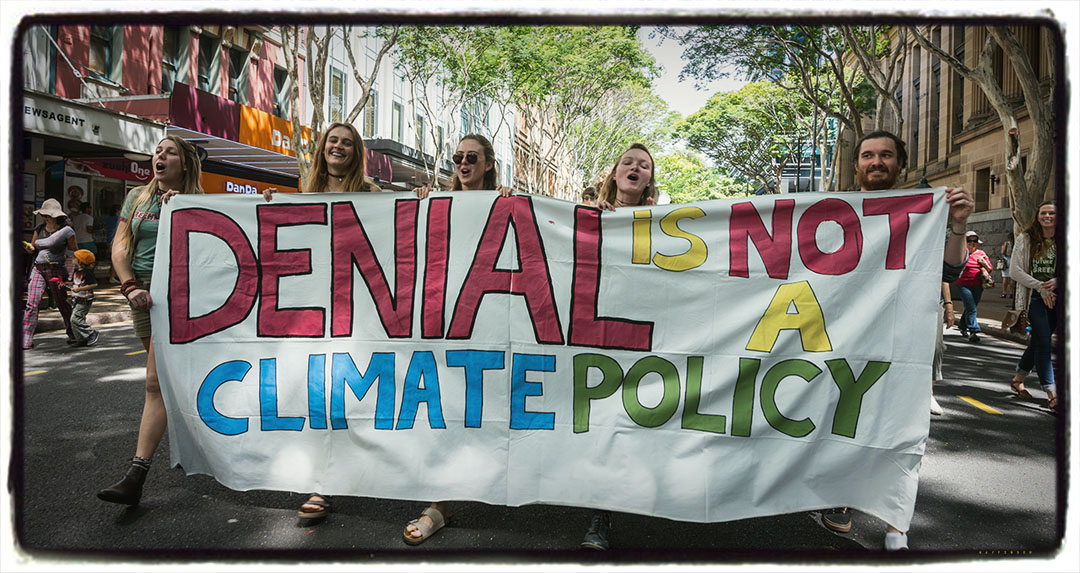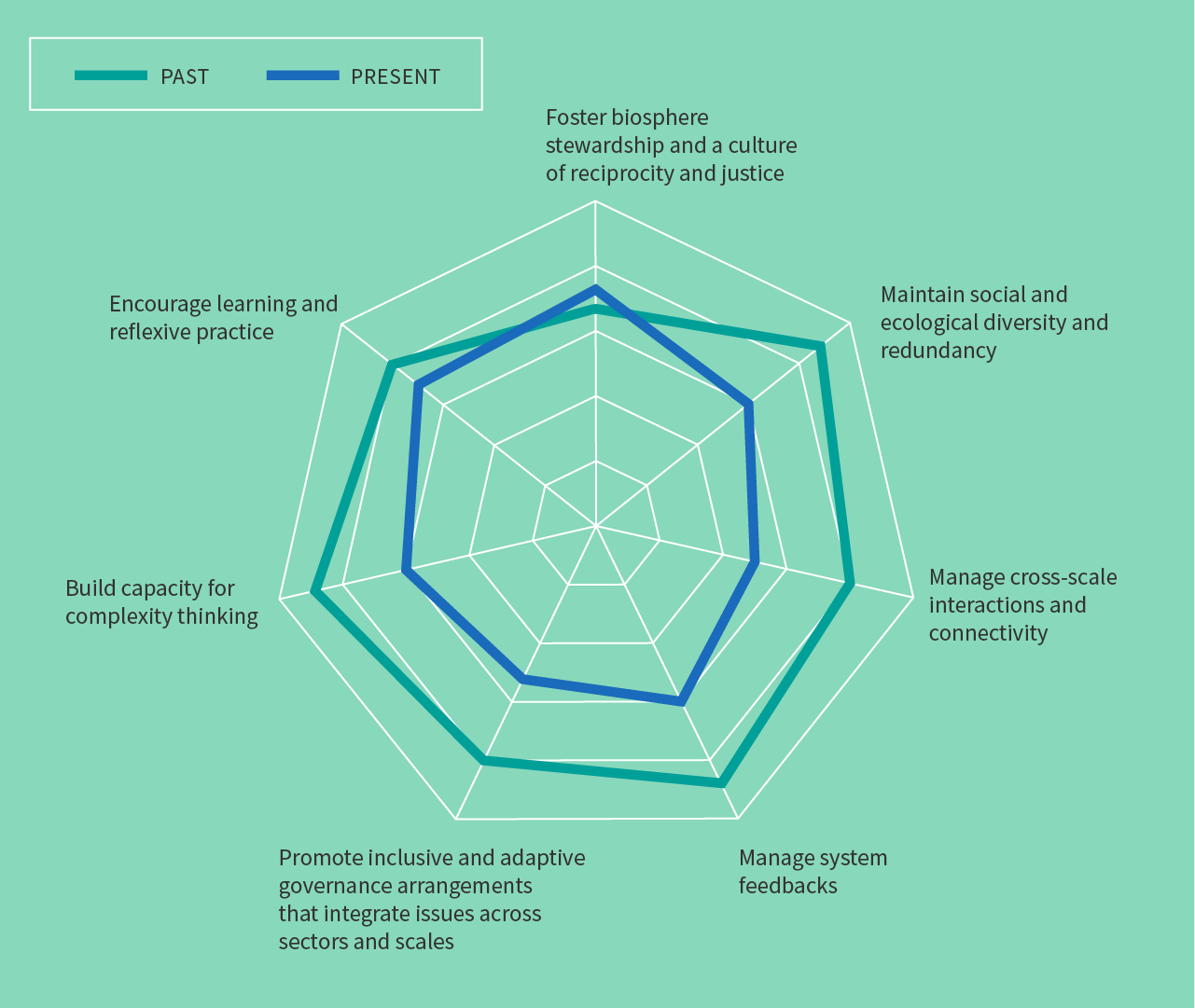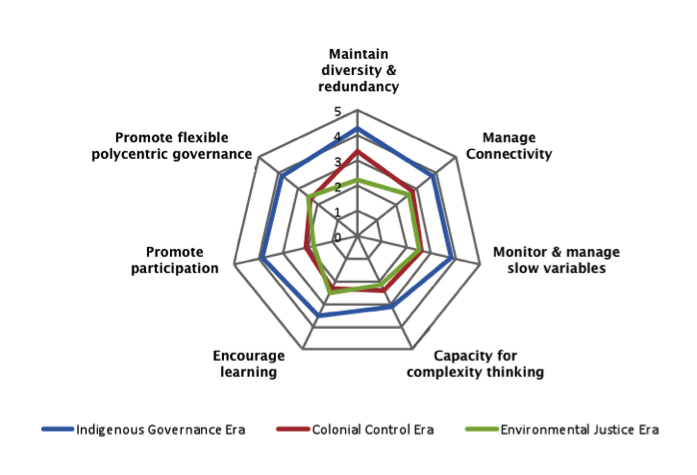Why option space is important
We live in a time of deep uncertainty, in a world increasingly characterized by shocks and surprises. As conditions change, so does the challenge of sustainable development. History is filled with examples of solutions that seemed like great ideas in the beginning, only to become part of the problem over time. Similarly, while solving one problem, we have often unintentionally created a range of new ones that we had failed to foresee. For example, while the green revolution brought about important increases in crop yields and led to a significant increase in wellbeing for many, indirectly and over time it also led to the displacement of farmers without secure land tenure, to severe effects on soil health and water quality as a consequence of excessive nutrient inputs, and to declining populations of important pollinator insects because of high pesticide use. Thus, while trying to solve the problems we face here and now, we need to make sure that we also maintain the capacity to adapt and transform in response to future change. In Wayfinder, we refer to this as maintaining option space within the system.

University students demonstrate during the People’s climate march in Brisbane, Australia. Navigating towards sustainability is a continuous process and we need to nurture our long-term capacity to adapt and transform to changing conditions, such as a climate changing in unpredictable ways. In Wayfinder, we refer to this long-term capacity for navigating change as maintaining option space. Photo: iStock.
The idea of option space is akin to a system’s general resilience, i.e. the system’s capacity to deal with unforeseen change, shocks and stresses. Different resilience researchers and practitioners have operationalized this capacity in different ways, through some combination of principles that emphasizes issues such as diversity/redundancy, memory/learning/self-organization, connectedness/modularity, and leadership/participation.
Operationalizing option space
In Wayfinder we operationalize option space through seven dimensions. Developing these, we have primarily drawn on the work of scientists who describe a set of 7 principles relating to the resilience of ecosystem services. We have adapted this set to better fit with the broader framing of Wayfinder. In the Box 21.1 we list the 7 dimensions of option space that we propose, where the first three are important at an individual level, and the latter four relate to aggregated social, ecological or social-ecological levels.
Going through these dimensions, discuss how they translate to your system. Can you think of one or a few indicators for each dimension that is particularly relevant for your system? For instance, what aspects of diversity and redundancy are most important in your system? Is it the diversity of crops, or is it livelihood diversity, or the diversity of innovative practices?
Click here to learn more about the 7 principles for the resilience of ecosystem services by Oonsie Biggs, South Africa Research Chair, Social-Ecological Systems and Resilience Research at Stellenbosch University and the Stockholm Resilience Centre
Box 21.1 – 7 dimensions of option space
1. Foster biosphere stewardship and a culture of reciprocity – To have any chance at a more sustainable, safe and just future, it is essential that we, as humans, recalibrate our values. We must find ways to reconnect to ecosystems around us, we must become active stewards of planet Earth, and we must foster a sense of connection and reciprocity between people near and far.
2. Build capacity for complex systems thinking – Social-ecological systems are highly complex. Building capacity for complex systems thinking, where we consistently strive to look below the surface for explanations, is central for being able to navigate towards sustainability.
3. Encourage learning and reflexive practice – The most viable approach to managing and working within complex systems in the Anthropocene, where uncertainty, emergence, and surprise are characteristic features, is one that focuses on learning. We also must stimulate innovation so that we have new sources to learn from.
4. Maintain social and ecological diversity and redundancy – System components with a diversity of responses, overlaps and back-up functions will provide key sources to draw on in the face of change
5. Manage cross-scale interactions and connectivity – In the hyper-connected world that we live in today, where global and regional trends affect all local prospects for development, and local actions aggregate up to produce systemic effects, managing cross-scale interactions and connectivity within social-ecological system is critical. This will both help us reduce the vulnerability to shocks that propagate though the system and enable diffusion of innovative practices.
6. Manage system feedbacks – Monitoring slowly changing system variables and identifying key system feedbacks is essential for creating both adaptive and transformative change. This includes identifying traps, where adaptive change in the short term may reduce the prospects for transformative change in the long term.
7. Promote inclusive and adaptive governance approaches, that integrate issues across sectors and scales – Promoting inclusive governance arrangements, where people actively participate in management decisions, through adaptive processes that respond to change and enable emergence, and that integrate relevant issues across sectors and scales, will greatly improve adaptive and transformative capacity over time



